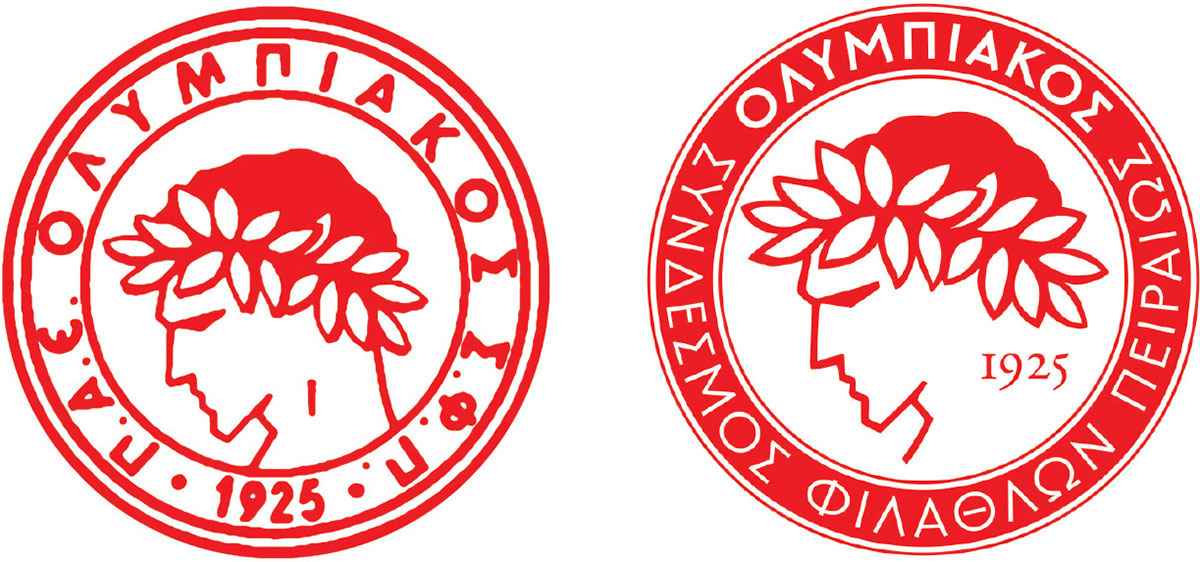
OLYMPIACOS
THE OLYMPIC IDEAL
Faithful to the history of its country, one of Greece’s leading sports clubs was inspired by the basic values of Ancient Greece. The first Olympic Games were organised in 776 BC, in Olympia. The competition became a recurring tradition and would go on to inspire the modern Olympics, which were launched in 1896 in Athens. The Latin motto for the modern games is Citius, Altius, Fortius, meaning, ‘Faster, Higher, Stronger’. Out of this motto emerged Olympiacos, one of Greece’s foremost sports associations.
Olympiacos was founded in 1925 in the port of Piraeus, just outside Athens, after the merging of two former clubs. Although most of those present at that historic meeting were prosperous, the club soon gained popularity within Piraeus’s working-class community. The team laid the foundations for their future dominance when they were undefeated for three consecutive seasons between 1926 and 1929 – an achievement that not only fostered the myth of Olympiacos but also provided the club with its nickname, Thrylos (‘The Legend’). The early successes, including a further six league titles in the 1930s, set the tone for the remainder of the century. Today the red and white club is by some distance Greece’s most successful in terms of league and cup titles.
While Olympiacos has struggled to match such domestic triumphs on the international stage, the club is one of five European teams who have made the most Champions League group stage appearances. But where the football section has so far failed, other parts of the association have stepped up and the club has won European titles in volleyball, water polo, wrestling and basketball – a breadth of achievement which fits well with the club’s Olympic heritage.
CLUB: Olympiakós Sýndesmos Filáthlon Peiraiós (Olympic Association of Piraeus Sportsmen)
NICKNAMES: Thrylos (the Legend), Erythrolefkoi (the Red and Whites) and Dafnostefanomenos (Those Wearing the Olive Wreaths)
FOUNDED: 1925
STADIUM: Georgios Karaiskakis Stadium, Piraeus (33,296 capacity)
HISTORIC PLAYERS: Giorgos Sideris, Giovanni, Predrag Djordjevic, Yaya Touré, Rivaldo, Javier Saviola, Esteban Cambiasso and Christian Karembeu

When Olympiacos was founded, the club’s first emblem portrayed a young athlete wearing a wreath of olive leaves that were awarded to winners in the ancient Olympic Games. The olive tree was associated with the god Zeus, while the athlete symbolised strength, morals, sportsmanship, the Olympic ideal and Ancient Greece. The precise years when these earliest emblems were used are vague, but it is certain that the club was given the emblem in 1925. This is one of the earlier versions.

1995–2003 and 2003–2013. The club crest underwent a couple of changes, though the basic image, the wreathed Olympian, was retained. The look of the athlete, the placing of the year and the colours have all been subject to alteration, which we can see in these two versions.

2013–present. The stars were introduced after Olympiacos’ 40th league title in 2013, a star for every 10th championship. When the club was created, the colour red was chosen to convey courage and passion while the white represented innocence and morality. The name Olympiacos was adopted to honour Ancient Greece but also to attract supporters beyond Piraeus.

Olympiacos’ Predrag Djordjevic under pressure from Juventus’ Zinedine Zidane in the 1999 Champions League quarter-final. Having already recorded their best performance in the tournament to date, the Greek team narrowly missed out on a semi-final spot after conceding a goal in the final minutes of their second-leg match.